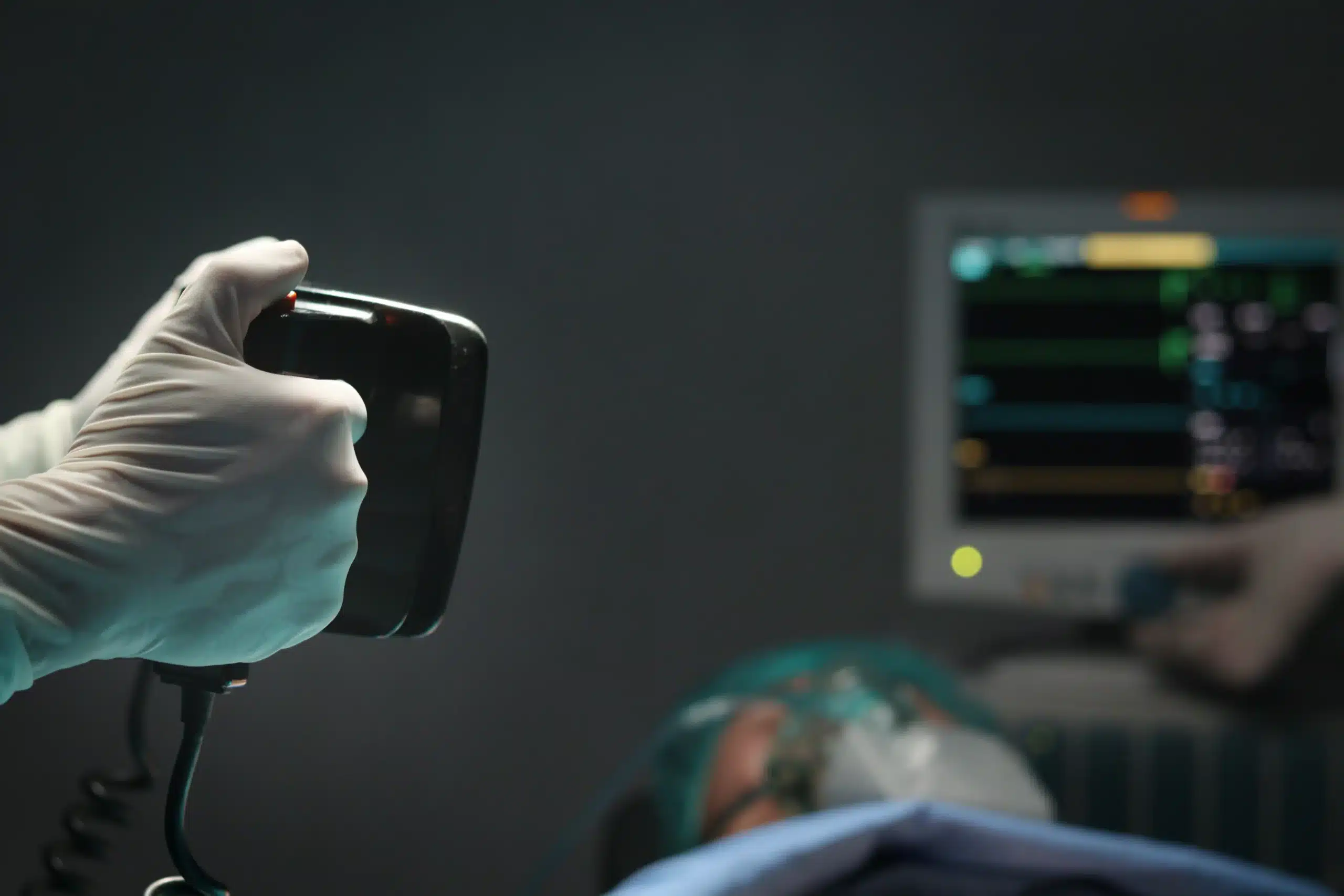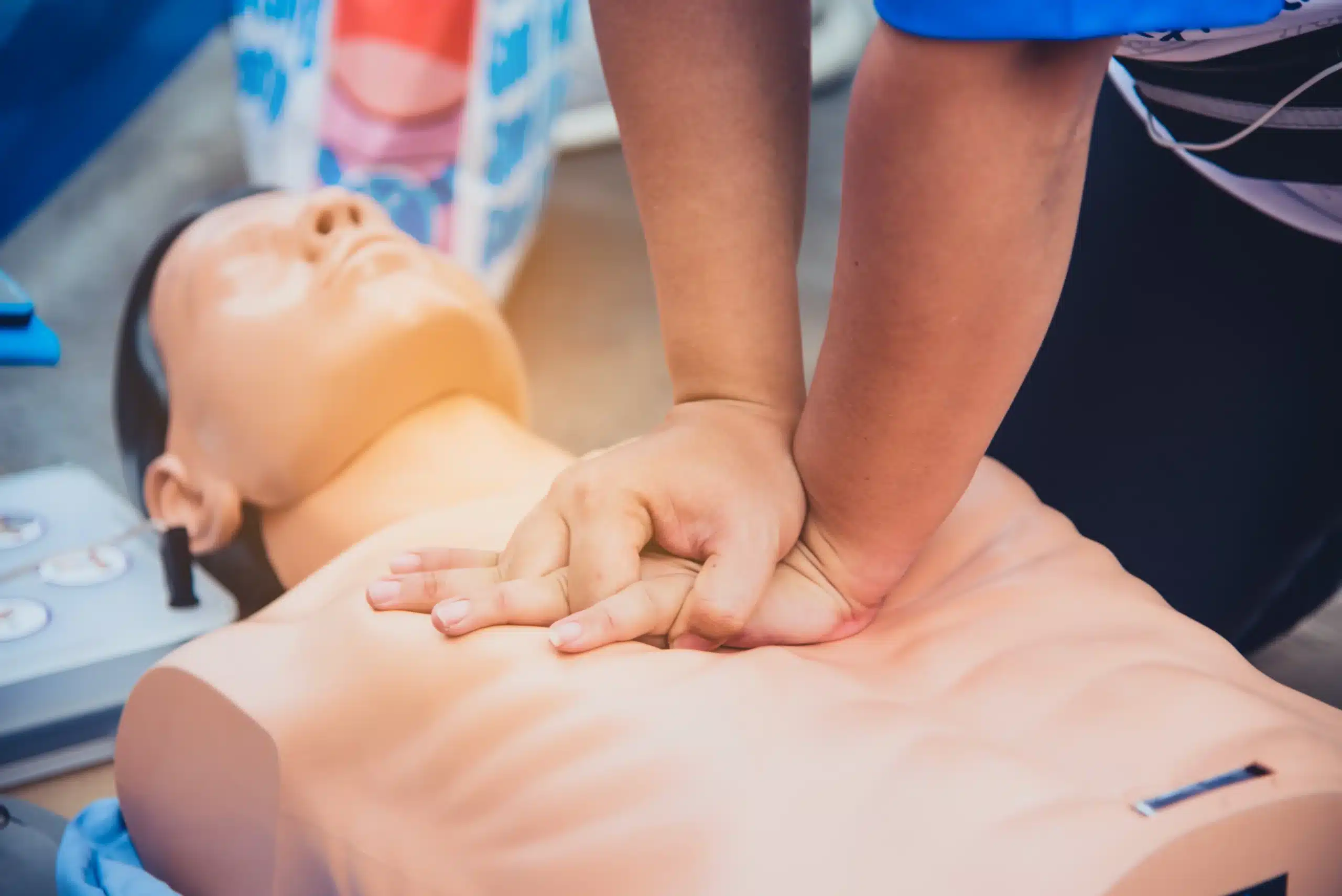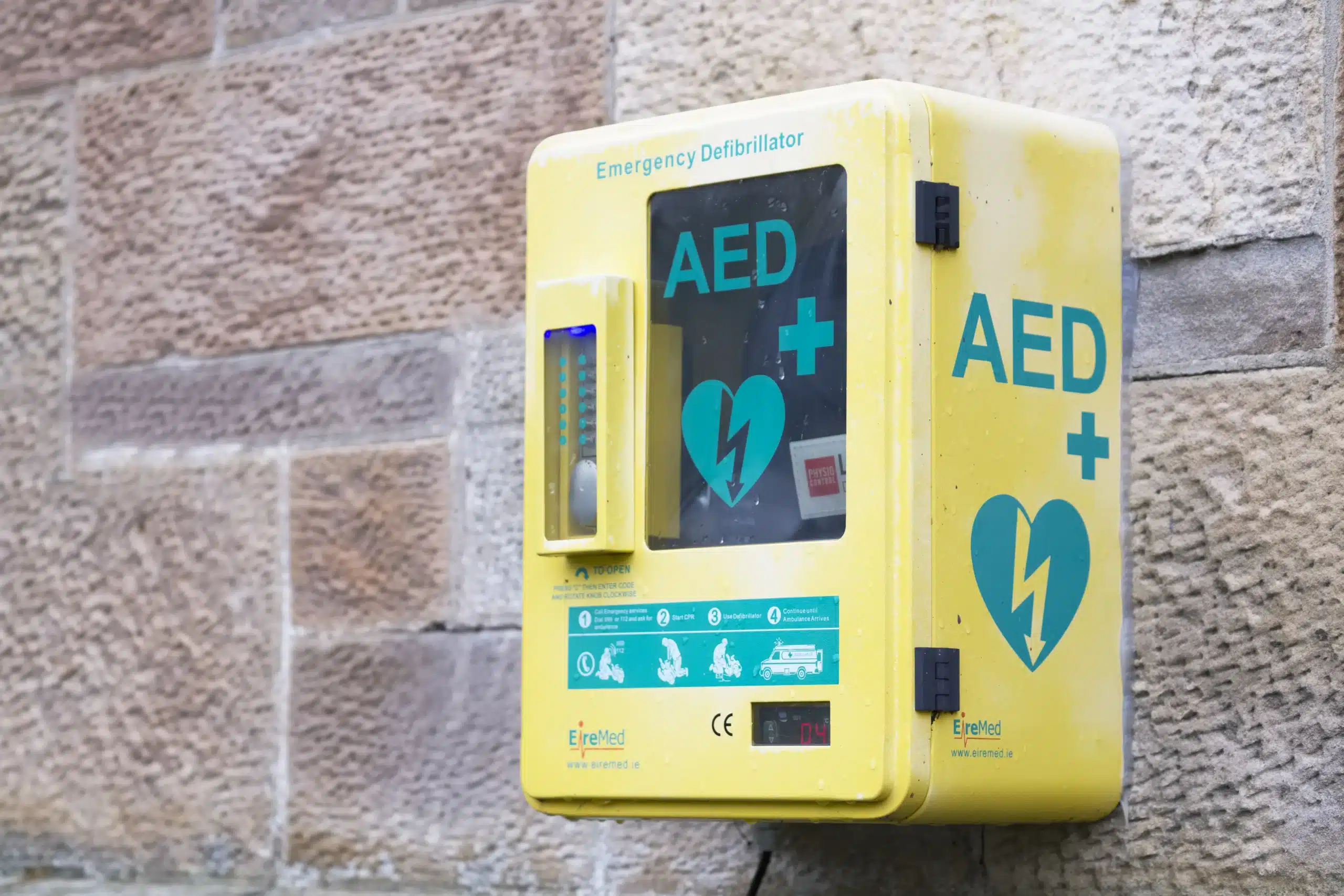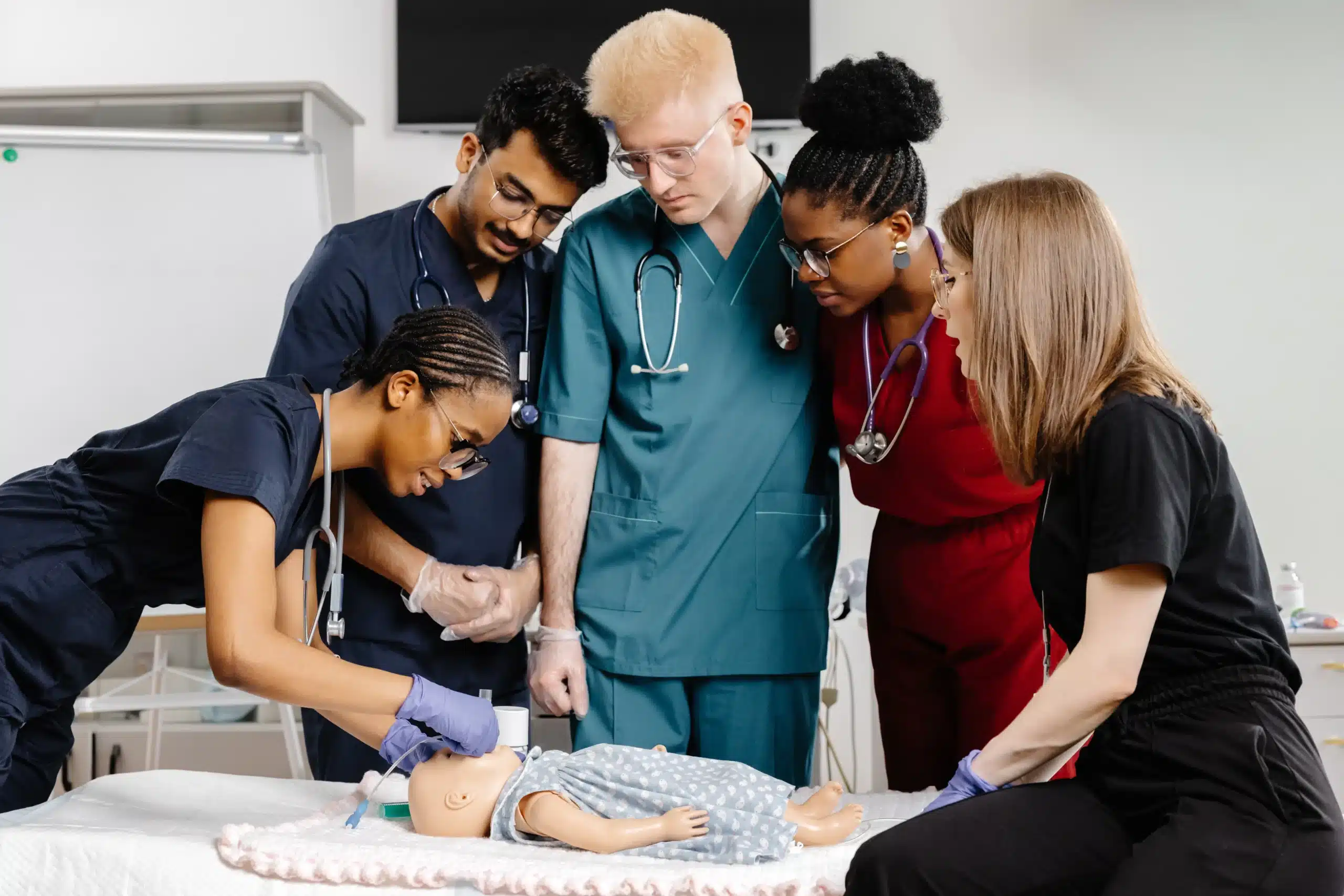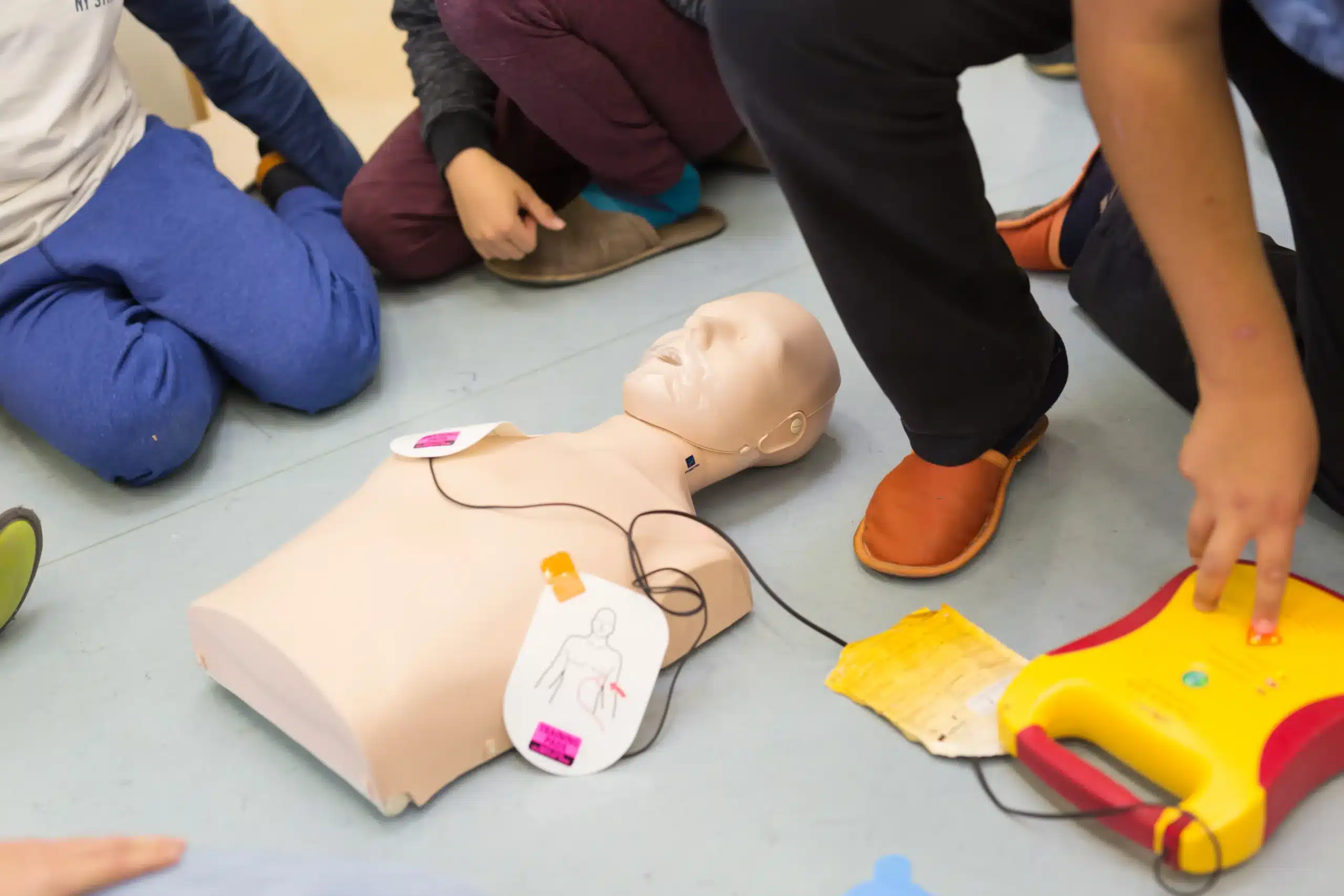Juggling work, family, and other commitments can make it tough to find time for essential training like CPR certification. But what if you could learn these life-saving skills at your own pace, from the comfort of your home? If you live in the Oakland area, online CPR classes in Oakland offer a flexible and convenient solution. This comprehensive guide covers everything you need to know about online CPR training in Oakland, from the benefits of online learning to choosing the right course and understanding instructor qualifications. We’ll explore available certifications, compare online and in-person options, and delve into the costs and expectations of online CPR classes in Oakland. Empower yourself with the knowledge and skills to make a difference – let’s explore the world of online CPR training together.
Key Takeaways
- Online CPR training offers flexibility and affordability: Blended learning formats let you learn at your own pace and often cost less than traditional classes. Choose a program that combines online modules with in-person skills practice.
- Choose a reputable provider that aligns with your needs: Research providers in Oakland offering certifications from organizations like the American Heart Association or Red Cross. Consider instructor qualifications and available resources when making your decision.
- Online CPR training is an effective way to learn life-saving skills: Studies show online learning can be just as effective as in-person instruction, especially with blended learning formats. This makes it a convenient option for busy individuals.
What are Online CPR Classes?
Online CPR classes in Oakland offer a flexible way to learn life-saving skills. They typically involve online instruction combined with in-person skills practice and testing. This blended learning approach lets you study the cognitive components of CPR at your own pace and then demonstrate your skills to a certified instructor. Many people appreciate this format, finding it easier to fit into busy schedules. If you live in Alameda, Oakland, or Berkeley, California, you have many options for finding a course that works for you.
Benefits of Online CPR Training
Online CPR courses offer several advantages. The flexibility to learn at your own pace and on your own schedule is a major draw, especially for those juggling work, family, and other commitments. This self-paced format can also improve knowledge retention, as highlighted in a study by Boise State University which found online first aid and CPR training yielded comparable results to in-person courses. This means you can take your time with challenging concepts and review material as needed. Plus, online courses are often more affordable than traditional classroom-based training.
Available Online CPR Certifications
Several reputable organizations offer online CPR certifications, usually combined with in-person skills sessions. The American Red Cross provides various CPR and first aid courses in Oakland for individuals, first responders, and organizations. You can also find blended learning CPR certification courses through providers like Safety Training Seminars, which offers a range of American Heart Association certifications, including BLS, ACLS, and PALS. It’s important to choose a program that aligns with your specific needs and career goals. For example, healthcare providers often require certifications from the American Heart Association, while the Red Cross certification may be sufficient for others. Research the different options available in Oakland to find the best fit.
Best Online CPR Classes in Oakland
Finding the right online CPR class can feel overwhelming with so many options. To help you decide, we’ve compiled a list of reputable providers offering online CPR certification in Oakland.
American Red Cross
The American Red Cross offers a blended learning CPR certification course that combines online learning with in-person skills sessions. This format lets you learn the basics at your own pace before demonstrating your skills to a certified instructor. Their online modules cover adult, child, and infant CPR, plus how to use an automated external defibrillator (AED). Red Cross certification is widely recognized and valid for two years.
CPR Certification Oakland
CPR Certification Oakland provides American Heart Association (AHA) certified CPR and First Aid classes in online formats. They offer various courses, including CPR-only and combination CPR/First Aid classes. With a focus on practical skills and real-world scenarios, CPR Certification Oakland aims to give students the confidence to respond effectively in emergencies.
Safety Training Seminars
Safety Training Seminars offers a range of AHA-certified online courses, including CPR, BLS, ACLS, and PALS. As a woman-owned business, they prioritize excellent customer service and flexible scheduling. Their online platform provides interactive learning modules and easy access to course materials. Check out their website for their low price guarantee and group discounts.
Other Providers
Beyond these established providers, many other organizations offer online CPR training. When considering these options, verifying the certifying organization’s credibility and ensuring the course meets your needs is crucial. Look for programs that align with current AHA or Red Cross guidelines and offer a balance of theoretical knowledge and practical application. Online CPR training offers the convenience of learning on your own schedule, but remember that hands-on practice is essential for mastering CPR techniques. Many online courses require an in-person skills assessment for full certification.
Online vs. In-Person CPR Classes: Which is Right for You?
Deciding between online and in-person CPR training is a personal choice. Both options offer valuable instruction, but cater to different learning styles and schedules. Understanding the key differences will help you choose the best fit for your needs.
Flexibility and Convenience
Online CPR courses offer unparalleled flexibility. You can learn at your own pace, revisiting material as needed, and fitting the training around your schedule. This is especially helpful for busy professionals, parents, or anyone with unpredictable commitments. If you prefer learning in short bursts or need to review specific sections multiple times, online learning offers that control. MyCPR NOW discusses the pros and cons of online CPR training in more detail.
Hands-On Practice and Skill Development
In-person CPR classes prioritize hands-on learning. You’ll practice techniques on mannequins under the direct supervision of an instructor. This real-time feedback and correction is invaluable for developing proper technique and building muscle memory. If you’re a kinesthetic learner or value the reassurance of in-person guidance, a traditional class setting may be a better fit. CPR Care explores the effectiveness of virtual CPR training compared to in-person classes.
Learning and Retention
While both methods aim to equip you with life-saving skills, they approach learning differently. Online courses often incorporate interactive elements and simulations to reinforce concepts. Research from Boise State University suggests that online first aid and CPR training can be just as effective as in-person instruction. In-person classes provide the immediate feedback and opportunity for clarification that some learners find essential for retention.
Effectiveness and Certification
Regardless of the format you choose, both online and in-person CPR training cover the same core skills and information. You’ll learn adult, child, and infant CPR, how to use an AED, and basic first aid. Heart Start CPR clarifies the similarities and differences between online and in-person CPR certification. Ultimately, both options can lead to a recognized certification, allowing you to confidently respond to emergencies.
Participant Experiences
The learning experience differs significantly between the two formats. Online courses offer self-paced learning and 24/7 access, but may lack the dynamic interaction of a classroom setting. As Heart Start CPR points out, online learners sometimes miss the direct interaction with an instructor and the opportunity for immediate feedback. In-person classes foster a sense of community and allow for real-time questions and demonstrations. Consider your preferred learning environment and the level of interaction you need to thrive.
Cost of Online CPR Classes in Oakland
CPR certification is an investment in your skills and ability to respond to emergencies. Understanding the costs associated with online CPR training will help you find a course that fits your budget. Let’s break down the typical pricing structure for online CPR classes in Oakland.
Course Pricing
Online CPR class prices in Oakland generally range from $40 to $80, depending on the level of certification and whether you opt for add-ons like First Aid training. For example, a basic online CPR course might cost around $65, while a combined CPR and First Aid certification could be closer to $85. Safety Training Seminars offers competitive rates for various CPR certifications.
Discounts and Promotions
Many training providers, including Safety Training Seminars, offer discounts, making training more accessible. Group discounts are available, making it a cost-effective option for workplaces or community groups. Be sure to check for any seasonal promotions or discounts for students, healthcare professionals, or other groups.
Class Bundles
Bundling your CPR training with First Aid or other related certifications can often save you money compared to taking each course individually. CPR/First Aid combo classes are a popular choice, providing comprehensive training for a variety of emergency situations. Check with your chosen provider to see what bundled options they offer and compare the cost savings. Safety Training Seminars offers various course packages to meet your needs.
What to Expect in Online CPR Training
Online CPR training blends online learning with in-person skills practice and testing. This blended learning approach lets you learn the material at your own speed before demonstrating your skills to an instructor. Here’s what you can typically expect:
Course Content and Structure
Online CPR courses offer the convenience of learning at your own pace, fitting easily into busy schedules. You’ll work through modules covering essential CPR principles and techniques, often enhanced with videos and interactive exercises. This self-directed learning allows you to review material as needed and ensures you grasp the core concepts before moving on. Many providers, like Safety Training Seminars, offer a variety of courses, including BLS, ACLS, and NRP certifications.
Interactive Learning
Online CPR training isn’t just about reading text; it uses interactive elements to keep you engaged and improve knowledge retention. Expect features like videos demonstrating proper techniques, quizzes to test your understanding, and simulations that let you apply your knowledge in realistic scenarios. Research suggests that this type of interactive learning online can be highly effective in building confidence and improving practical skills.
Assessments and Skills Evaluation
While the coursework happens online, demonstrating your CPR skills requires an in-person evaluation. After completing the online modules, you’ll schedule a skills check with a certified instructor. This session focuses on the practical application of CPR techniques, ensuring you can perform them correctly and confidently. Studies have shown that this blended approach, combining online learning with in-person evaluation, is comparable to traditional classroom-based methods for developing CPR proficiency.
Certification Process
Once you’ve successfully completed both the online coursework and the in-person skills check, you’ll receive your CPR certification. This certification is typically valid for two years, after which you’ll need to recertify to stay current with the latest guidelines and maintain your skills. For more information on certification, check with your chosen provider, such as Safety Training Seminars, for their specific certification process and renewal options.
Instructor Qualifications
Knowing your instructor’s qualifications is key when choosing an online CPR class. It ensures you’re learning accurate information and best practices. Look for certifications, experience, and a commitment to staying up-to-date with the latest CPR techniques. This section breaks down what to look for in a qualified CPR instructor.
Instructor Requirements
CPR instructors should hold a current certification from a nationally recognized organization, such as the American Heart Association or the American Red Cross. These organizations have specific requirements instructors must meet, including background checks and ongoing training. For example, the Red Cross offers instructor training programs for various levels of CPR, including those designed for schools and organizations. Check with your chosen provider to confirm their instructors meet these standards. Safety Training Seminars instructors, for instance, are all certified by the American Heart Association, ensuring they meet rigorous standards.
Experience and Expertise
Beyond basic certification, consider the instructor’s experience. An instructor with years of experience teaching CPR, especially in various settings, can offer valuable insights and real-world examples. This practical experience can make the learning process more engaging and applicable to different situations. Look for instructors who have worked with diverse groups, like healthcare providers or community members. This breadth of experience often translates to a deeper understanding of CPR techniques and their practical application. Our group discounts make it easy for organizations to train their staff with our experienced instructors.
Current CPR Techniques
CPR guidelines and techniques are regularly updated. A qualified instructor should be knowledgeable about these changes and incorporate them into their teaching. They should also be familiar with different CPR protocols for various age groups and situations. Ask potential providers how they ensure their instructors stay current with evolving CPR practices. For example, some providers use a curriculum reviewed by medical experts, like the Red Cross CPR classes, to ensure accuracy. This commitment to ongoing education ensures you learn the most effective, up-to-date, life-saving techniques. At Safety Training Seminars, we prioritize staying current with the latest guidelines, including the fast certification RQI program, to provide the best possible training. Our low price guarantee makes staying current accessible to everyone.
Choose the Right Online CPR Class in Oakland
Finding the right online CPR class depends on your learning style, schedule, and certification needs. Think about what’s important to you—is it the flexibility of online learning, the price, or the reputation of the certifying organization? Let’s break down how to choose the best fit.
Factors to Consider
Online CPR courses offer the convenience of learning at your own pace, fitting easily into a busy schedule. This format works well for people juggling work, family, or other commitments. However, also consider your learning preferences. Some people thrive in a structured classroom, while others prefer self-directed study. If you value real-time feedback and hands-on guidance, an in-person class might be a better fit. Decide what learning environment will set you up for success.
How to Enroll
Once you’ve decided to learn online, choose a training provider affiliated with a recognized organization like the American Heart Association or the American Red Cross. Our CPR training guide offers helpful tips for finding reputable providers. Before committing, confirm that the online CPR certification meets the requirements of your employer or licensing board. This ensures your certification will be valid and accepted.
Common Misconceptions
One common misconception about online CPR training is that it lacks the personalized feedback of in-person classes. While online courses may not offer the same level of real-time interaction, many providers incorporate interactive elements and simulations. If you’re a visual learner or prefer hands-on practice, consider supplementing your online coursework with an in-person skills session. Learn more about the pros and cons of online CPR certification. Another misconception is that online CPR training is less effective. Research suggests online learning can be just as effective, especially when combined with hands-on practice.
Resources and Support
Many online CPR courses offer additional resources and support. Look for providers that offer practice tests, refresher materials, or access to instructors for questions. Studies show online learning can be highly effective, particularly when combined with practical application. Blended learning, which combines online coursework with in-person skills sessions, is often the most effective approach. Explore blended learning options to find a program that balances flexibility with hands-on training.
Related Articles
- CPR Courses in Oakland: Your Complete Guide – Oakland CPR Classes
- Find CPR Classes Near Me: A Complete Guide – Oakland CPR Classes
- BLS CPR Classes in Oakland, CA – Oakland CPR Classes
- BLS, ACLS, PALS, CPR & First-aid Classes in Oakland, CA
- CPR Certification in Oakland: Your Guide – Oakland CPR Classes
Frequently Asked Questions
Is online CPR certification as good as in-person training? Online CPR training, especially blended learning that combines online coursework with in-person skills practice, can be just as effective as traditional classroom learning. Studies have shown comparable learning outcomes between the two formats. The key is to choose a reputable provider that aligns with current guidelines and offers a balance of theory and hands-on practice.
How long does online CPR certification last? CPR certifications are typically valid for two years. After that, you’ll need to recertify to stay current with the latest guidelines and maintain your skills. Check with your specific certifying organization or training provider for their renewal policies and procedures.
What if I’m not comfortable learning online? If self-directed learning isn’t your style, consider a blended learning approach. These courses combine the flexibility of online learning with the support of in-person skills sessions. You can learn the material at your own pace online and then practice your skills with a certified instructor. This allows for personalized feedback and helps build confidence.
How much do online CPR classes cost in Oakland? Online CPR classes in Oakland typically range from $40 to $80. The price depends on factors like the level of certification, whether it includes First Aid training, and any available discounts. Look for providers offering group discounts or bundled courses to save money.
What should I look for in an online CPR training provider? Choose a provider affiliated with a recognized organization like the American Heart Association or the American Red Cross. Ensure their instructors are certified and experienced, and that the curriculum aligns with current CPR guidelines. Also, consider the provider’s reputation, student support resources, and the flexibility of their scheduling options.
